In this activity, we will be reading different scales for temperature, mass, length, and capacity.
We measure the temperature on a thermometer.
The temperature measures how warm or cold something is!
We measure temperature in degrees Celsius and we write °C to show this.

On a warm day, the temperature might be 20°C (this reads 20 degrees Celsius.)
Let's have a look at how to read a thermometer.
What temperature does this thermometer read?
.png)
The first thing we need to do is work out the scale.
We have been given 0, 5, and 10, so let's try counting up in ones for each mark and see if that works.
Yes, it does!
Now, we need to go to the top of the red line and read along to the scale like this:
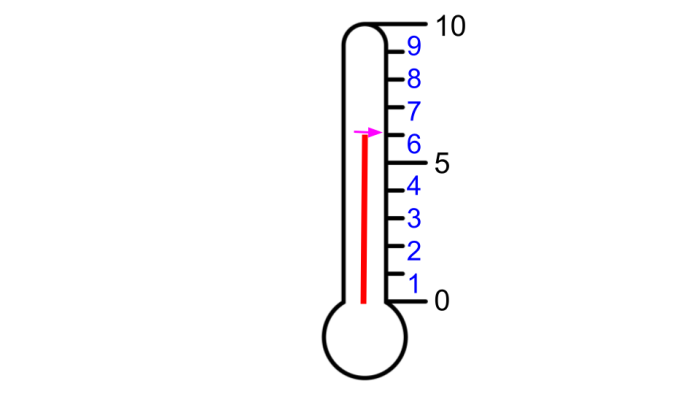
The thermometer reads 6°C
We measure mass by using scales.
We measure mass in grams (g) and kilograms (kg).
We can use balancing scales to measure mass.
These work by making the scales balanced, then we can count how many weights there are.
Here, the scales are balanced which means the bike weighs the same amount as the weights.
This bike weighs 20 kg.
.png)
Or we can use scales where we read the scale to find the weight.
These are just called scales:
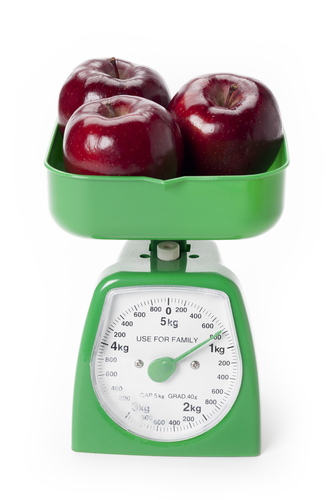
These scales measure the weight of these apples and the arrow is pointing to 800 g which means they weigh 800 grams.
1,000 grams make 1 kilogram.
We measure length by using rulers.
We measure height and lengths using rulers.
We measure in centimetres (cm) and metres (m).
100 cm = 1 metre
Here is a ruler measuring a pencil.
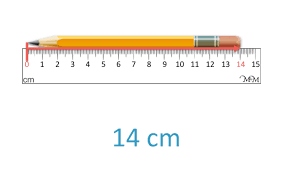
This pencil is 14 cm long.
Here is a measuring tape measuring a hammer.
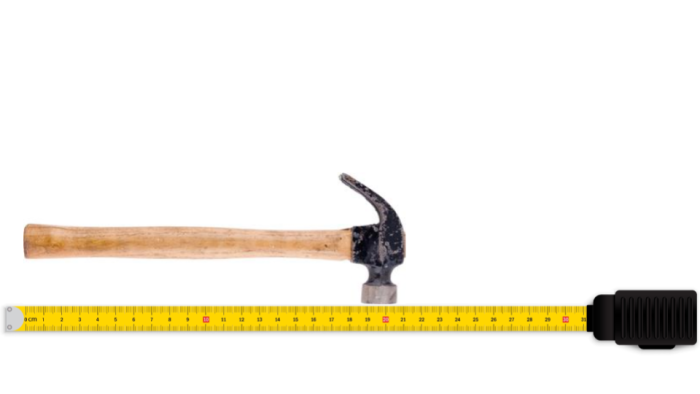
This hammer is 21 cm long.
We measure capacity by using measuring vessels.
Capacity is the measurement of a liquid in a vessel.
We measure it in millilitres (ml) and litres (l).
1,000 ml makes 1 litre.
We would use something like a measuring jug to measure capacity.
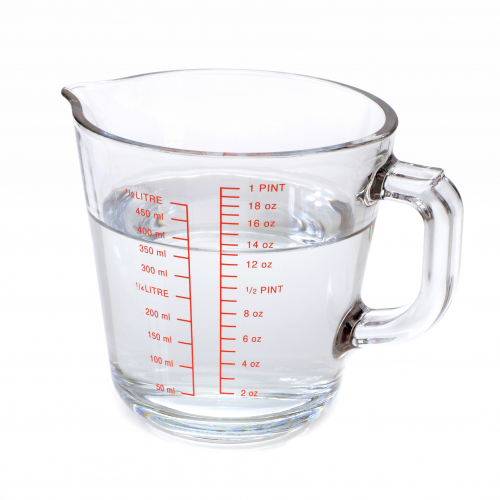
This measuring jug measures between 350 ml and 400 ml as that is where the water stops.
We can make an estimate (a sensible guess) of the amount, by picking a number that is about halfway between 350 and 400.
We could estimate that the jug measures 375 ml.
Ok, are you ready to have a go at some questions?







